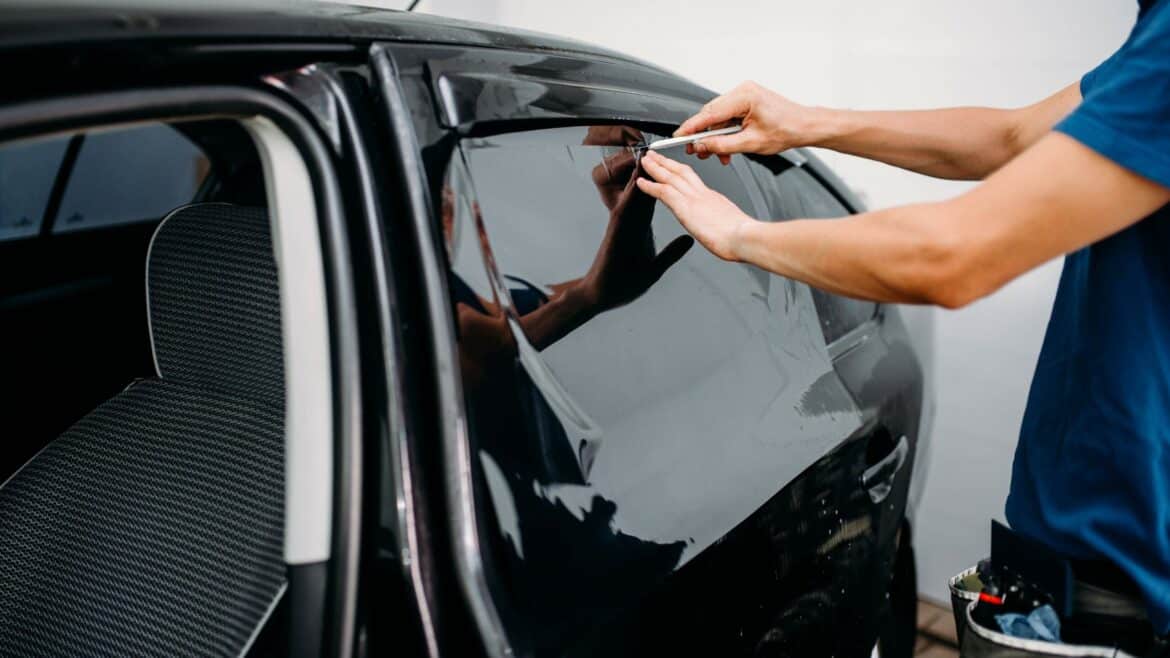3.7K Car wrapping, as the foiling of the car is also called, is becoming more and more fashionable. It is usually easy to do and the costs are much lower than painting the car. However, you should leave the wrapping of the car to the professionals, because it takes quite a bit of experience and technical skill to achieve good results.
Car wrapping, as the foiling of the car is also called, is becoming more and more fashionable. It is usually easy to do and the costs are much lower than painting the car. However, you should leave the wrapping of the car to the professionals, because it takes quite a bit of experience and technical skill to achieve good results. Foiling your car – what you need to know
When it comes to filming your car, there are various options open to you: In addition to full foiling, you can also have only selected areas of the car foiled, for example.
- The so-called paint protection film is particularly popular for new vehicles. A transparent film that is two to three times stronger than conventional films is applied to particularly sensitive areas, such as the front of the car. When the car is resold, the film can be easily removed and the vehicle looks as good as new.
- Filming car windows is very popular. However, only tinting films that have a type approval are permitted for the windows. The test numbers of the applied films must be clearly visible on each individual window. If the window films do not have a type approval, the type approval expires
- With the help of the film, cool designs can also be created or branding, for example for company vehicles, can be applied quickly. If the vehicle is sold at a later date, the company logo can be easily removed again.
- Of course, not everything that is pleasing is permitted in car wrapping. For obvious reasons, number plates, for example, are excluded from the wrapping. Turn signals and headlights may also not be wrapped. Furthermore, other road users must not be impaired in any way by the wrapping, for example by highly reflective surfaces.
- In short: The more extravagant the planned wrapping is to be, the more precisely you should enquire in advance whether it complies with the legal provisions of Section 30 of the Road Traffic Act.
- Otherwise you risk not only a proper fine and possibly points in Flensburg, but also your insurance cover.
- In contrast to paintwork, foiling can be removed relatively quickly. This is a great advantage, especially for company logos and the like.
- Foil wrapping is a much more cost-effective way of creating individual designs than would be possible with a paint job.
- Particularly for high-priced new cars, transparent paint protection film is a great advantage. Not only does it protect the car from stone chips or scratches in the relevant areas, the protective film also means that the car loses significantly less value.
- However, a film coating is not as durable as a paint job. The decisive factor for durability is the quality of the film and the finish of the film. A film coating lasts between three and ten years.
- Another disadvantage of foiling comes into play especially with partial foiling. Depending on how long the films have been on the vehicle, you will often see a difference from the colour of the non-foiled part of the car after the films have been removed.
- The non-foiled car paint is usually visibly lighter due to the environmental influences to which it is usually exposed. This difference will also no longer even out.
- When it comes to the cost of foiling, various factors play a role, including the choice of workshop as well as the quality of the foils selected, special design wishes and of course whether it is a full or partial foiling. Accordingly, the costs range somewhere between 400 and 6,000 euros.
Foiling the car – this is how it’s done
In addition to car wrapping, there is also car dipping. With car dipping, you apply a liquid film with a spray gun. A cost-effective option for minor touch-ups or decorations.
- Otherwise, if you are not familiar with this type of work, it is better to have it done by experts. A lot can go wrong when foiling your car, and then the fun quickly becomes quite expensive, especially if it’s a full wrap.
- Once you have decided to apply the film, do not wax or polish the vehicle as this will affect the durability of the film. To do this, take the car to the car wash a few times in the weeks beforehand. Dirt adhesion affects the film just as much as grease.
- Inspect the car in advance for rust adhesion. Immediately before the film is applied, the vehicle is then thoroughly cleaned again. Afterwards, remove all interfering parts, such as door handles and mirrors.
- Once the film is in place, it is time for the finishing touches. Use a scalpel or a cutter knife to remove any overlaps, cut the edges neatly and place them neatly around the edges.
- Finally, the freshly foiled vehicle surface is sealed and polished. This completes the foiling process. The car should “rest” for a few more hours so that the films can “set” properly.
Advantages and disadvantages of the procedure
Car wrapping offers several advantages over painting. One of these is that foiling is significantly cheaper. But that’s not all, of course:
